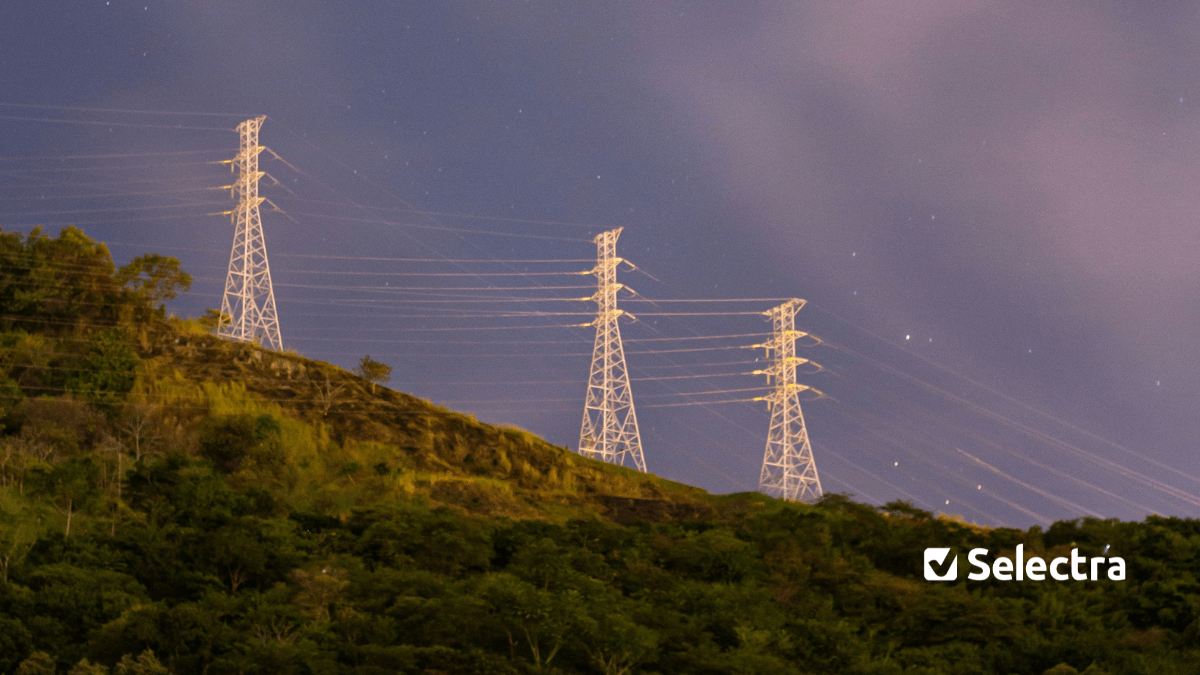Electricity Prices in Oceania (2025): Comparing New Zealand, Australia, and Pacific Islands

Electricity prices across Oceania vary dramatically, reflecting deep contrasts in geography, energy resources, infrastructure maturity, and policy direction. In New Zealand, the average electricity price is 0.36 NZD/kWh — slightly above the global average of 0.31 NZD/kWh. Smaller island nations face very different challenges: dependence on imported fuel, exposure to global oil price fluctuations, and difficulty maintaining extensive grid infrastructure across dispersed islands.
Electricity Prices in Oceania (2025)
Electricity prices across Oceania vary greatly depending on infrastructure, fuel sources, and government subsidies. New Zealand remains a regional benchmark with stable and transparent pricing, while other Pacific nations face challenges such as high generation costs and limited grid capacity. Below is an overview of the latest electricity rates per kWh across the region, expressed in NZD.
| Country | Price per kWh | Difference vs New Zealand | Notes |
|---|---|---|---|
| New Zealand | 0.36 NZD/kWh | — | Benchmark rate; mix of hydro, geothermal, and wind generation. |
| Australia | 0.37 NZD/kWh | +2.8% | Higher retail costs due to network and policy charges. |
| Papua New Guinea | 0.33 NZD/kWh | −8.3% | Lower tariffs but unreliable grid and frequent outages. |
| Fiji | 0.23–0.25 NZD/kWh | −30.6% to −36.1% | Hydropower-supported grid keeps costs lower for households. |
| Vanuatu | 0.80 NZD/kWh | +122.2% | High generation costs due to imported diesel and small-scale systems. |
| Tonga | 0.40–0.50 NZD/kWh | +11.1% to +38.9% | Diesel-dependent generation with gradual solar adoption. |
| Samoa | 0.35 NZD/kWh | −2.8% | Stable pricing supported by renewable energy expansion. |
| Solomon Islands | 1.10 NZD/kWh | +205.6% | Among the highest in the region; heavily reliant on imported fuel. |
| New Caledonia | 0.30–0.35 NZD/kWh | −16.7% to −2.8% | Industrial subsidies affect residential pricing; part-renewable mix. |
| French Polynesia | 0.40–0.50 NZD/kWh | +11.1% to +38.9% | Island isolation and import costs raise generation expenses. |
Prices are expressed in NZD per kWh as of November 2025. Data sources include regional regulators, national energy authorities, and utility reports. Some Pacific island nations have missing or unverified data due to limited reporting. Actual household prices vary by usage level, location, and subsidy structure.
New Zealand – Clean Energy Leadership with Moderate Consumer Prices
New Zealand’s electricity system is among the cleanest and most efficient in the world. Around 85 % of total generation comes from renewable sources — primarily hydropower, geothermal energy, and wind. This diverse clean mix ensures a high degree of reliability, with average annual outages of less than 2 hours per customer.
Prices average 0.36 NZD/kWh, with roughly 25–30 % of the cost attributed to transmission, distribution, and levies that fund infrastructure renewal and environmental commitments. The government’s market design combines competitive generation and retail segments with strong regulatory oversight, preventing extreme price volatility. Investment in distributed energy — like rooftop solar and battery systems — is growing steadily, supported by time-of-use tariffs and smart-metering adoption.
Australia – Competitive Market with High Variability
Australia operates one of the world’s largest interconnected electricity markets, spanning multiple regional networks within the National Electricity Market (NEM). The average consumer price stands at approximately 0.37 NZD/kWh — about 3 % higher than in New Zealand.
Despite having vast coal, gas, and solar resources, prices remain sensitive to fuel export trends, global commodity costs, and seasonal demand spikes. The transition from coal toward renewables and storage has required significant grid reinforcement, increasing fixed network charges. Consumers benefit from an advanced retail choice market and generous solar feed-in tariffs, but volatility remains a challenge during high-demand periods or extreme weather events.
Papua New Guinea – Abundant Resources, Limited Access
Papua New Guinea (PNG) reports one of the lowest average tariffs in the Pacific — roughly 0.33 NZD/kWh. However, this affordability comes with limited access: only about 15–20 % of the population is connected to the national grid.
Hydropower supplies much of PNG’s urban electricity, while remote and rural areas still depend on small diesel systems or private generators. Government initiatives under the Electricity Industry Policy aim to raise national access to 70 % by 2030 through rural electrification and renewable microgrids. Reliability remains low — outages are frequent, and infrastructure aging slows progress despite the nation’s vast hydro and gas potential.
Fiji – A Regulated, Renewable-Oriented System
Fiji’s electricity tariffs average about ≈ 0.23–0.25 NZD/kWh, positioning the nation near the regional middle. Generation is primarily hydropower, complemented by diesel and a small but growing share of solar. Urban centers like Suva enjoy stable service, while outer islands continue to rely on diesel microgrids that face logistical and maintenance challenges.
Fiji has one of the more developed power systems in the Pacific, yet electricity costs remain relatively high due to its partial reliance on imported fossil fuels. The main islands have fairly reliable access to power, but outer islands still face challenges with costly diesel-based generation.
The Fiji Electricity Authority (EFL) regulates retail prices and offers subsidized “lifeline” tariffs to low-income households. This policy balance supports social affordability while funding investment in renewables. The government’s target is 100 % renewable generation by 2036, which could shield the economy from imported fuel shocks and future global price volatility.
Vanuatu – Expensive Power from Imported Fuels
Vanuatu faces some of Oceania’s highest electricity costs, averaging roughly ≈ 0.80 NZD/kWh. Over 70 % of its generation depends on imported diesel, making prices extremely vulnerable to global oil markets and freight costs.
The small and dispersed population, coupled with difficult logistics, leads to high per-unit generation and delivery costs. Government programs supported by the World Bank and the Green Climate Fund are helping develop small-scale solar-hybrid systems in rural areas. However, grid reliability remains inconsistent, and outages remain frequent despite strong renewable investment intentions.
Solomon Islands – Highest Tariffs, Lowest Reliability
Electricity prices in the Solomon Islands are estimated at around ≈ 1.10 NZD/kWh, ranking among the most expensive globally. The nation’s small customer base and complete reliance on imported diesel drive these high tariffs.
Most of its power is generated from imported diesel fuel, which makes electricity prices extremely sensitive to global oil prices and transport costs. The country’s small, scattered islands and limited grid infrastructure also add to the challenge, maintaining and distributing power across remote communities is expensive and inefficient.
Only a portion of the population has access to electricity, and those connected often pay high tariffs, sometimes more than US$0.90 per kilowatt-hour. To reduce costs and improve reliability, the Solomon Islands is working to expand renewable energy — particularly solar, hydro, and biomass — and to strengthen its grid. Transitioning away from diesel will be key to lowering prices, improving energy access, and supporting sustainable development./
The government and donor partners are now investing in hydropower and solar generation to reduce costs and improve reliability. Projects like the Tina River Hydropower Project are expected to bring prices down by up to 30 % once operational. Until then, frequent outages and fuel price volatility remain the dominant challenges for both households and businesses.
Samoa – Gradual Renewable Transition
Samoa’s average residential electricity price is approximately ≈ 0.35 NZD/kWh. Hydropower already provides a significant share of generation, complemented by solar projects funded through international partnerships.
Samoa’s electricity system has historically relied on imported diesel, making it vulnerable to global fuel price fluctuations and high generation costs. However, in recent years, Samoa has made strong progress in integrating renewable energy, particularly hydropower, solar, and wind, to reduce its dependence on imported fuels.
The national target of 100 % renewable electricity by 2030 drives heavy investment in distributed solar and storage. Power reliability has improved in the main islands, but smaller communities continue to experience periodic disruptions. Prices remain moderate but depend heavily on imported fuel for backup generation during drought or low-sun periods.
Tonga – Dependence on Diesel and Price Pressure
Tonga’s energy sector depends overwhelmingly on imported diesel fuel, making electricity among the most expensive essentials in the nation. While prices fluctuate, estimates range from 0.40–0.50 NZD/kWh.
The Tonga Power Limited utility is implementing a renewable energy roadmap to increase the solar contribution to 50 % by 2030. Until that transition matures, volatility in global oil prices continues to translate directly into consumer tariffs, keeping energy affordability a major policy concern.
New Caledonia – Industrial Load Drives Costs
New Caledonia’s electricity market is dominated by large industrial consumers, particularly nickel smelters, which account for over two-thirds of total electricity demand. Residential users pay an estimated 0.30–0.35 NZD/kWh, reflecting the high cost of generation and network maintenance.
While reliability is good due to strong infrastructure, dependence on fossil fuels and high fixed costs keep prices elevated. Recent policy measures aim to expand renewable energy — notably solar and wind — to reduce emissions and cushion consumers from industrial price influence.
French Polynesia – High Cost, Strong Subsidy Framework
French Polynesia maintains electricity prices averaging ≈ 0.40–0.50 NZD/kWh, driven by geographic isolation and diesel imports. Despite these challenges, the territory offers stable service thanks to strong grid management and government subsidies that reduce costs for households.
The power sector is transitioning gradually toward renewables, with solar and biofuel projects expanding on major islands. The administration’s long-term goal is to cut fossil-fuel dependence by half before 2035, ensuring better price stability and energy security.
Oceania’s Outlook – Toward a Sustainable and Reliable Power Future
Across Oceania, electricity markets reveal a clear divide between developed and developing island economies. New Zealand and Australia enjoy reliable, well-regulated systems powered increasingly by renewables. In contrast, smaller Pacific states face high costs, logistical challenges, and fuel import dependence that hinder affordability and stability.
The cheapest electricity in Oceania can currently be found in Papua New Guinea and Fiji, while Vanuatu and the Solomon Islands remain among the world’s most expensive markets. Regional initiatives supported by the Asian Development Bank and the Pacific Power Association are fostering renewable deployment, microgrid expansion, and energy-efficiency programs. The path forward is clear: more investment in renewable capacity, grid interconnection, and smart-energy infrastructure will be essential for achieving both cost reduction and energy security across Oceania.

Electricity rates NZ 2025
Find the electricity provider with the best offer, including competitive solar buy-back rates and affordable EV charging plans, and start saving on your energy bill today.
Why are electricity prices different between Australia and New Zealand?
Electricity prices vary because each country has a different generation mix, market structure, and regulatory environment. New Zealand relies heavily on renewable energy—mainly hydro and geothermal—helping stabilise prices around 0.36 NZD/kWh. Australia has higher retail network and policy charges, keeping its average around 0.37 NZD/kWh. Transmission distances and regional tariffs also add to Australia’s slightly higher costs.
Which country in Oceania has the cheapest electricity?
Among developed economies, New Zealand maintains relatively low and stable household electricity prices. In the wider Pacific, Fiji often reports cheaper rates—around 0.23–0.25 NZD/kWh—thanks to hydropower subsidies. However, service reliability and coverage can differ widely between island nations.
Why are Pacific island electricity prices often so high?
Many Pacific nations rely on imported diesel fuel for power generation. Transport costs, small grid sizes, and lack of economies of scale push prices up. For example, Vanuatu and the Solomon Islands can exceed 0.80–1.10 NZD/kWh, among the highest in the world. Renewable energy projects are gradually helping to reduce these costs.
Are electricity prices expected to rise in Australia and New Zealand?
In both countries, prices may fluctuate due to fuel costs, climate impacts, and investment in renewable infrastructure. Australia is transitioning from coal toward solar and wind, which can cause short-term volatility. New Zealand’s renewable generation base offers more stability, but dry-year risks and grid upgrades could cause modest increases over time.
How do currency and subsidies affect electricity price comparisons?
All regional comparisons are shown in NZD per kWh for consistency. Exchange rate movements and government subsidies can make local costs appear higher or lower. For instance, Australia’s state rebates and New Zealand’s winter energy payments both influence what households actually pay on their bills.
